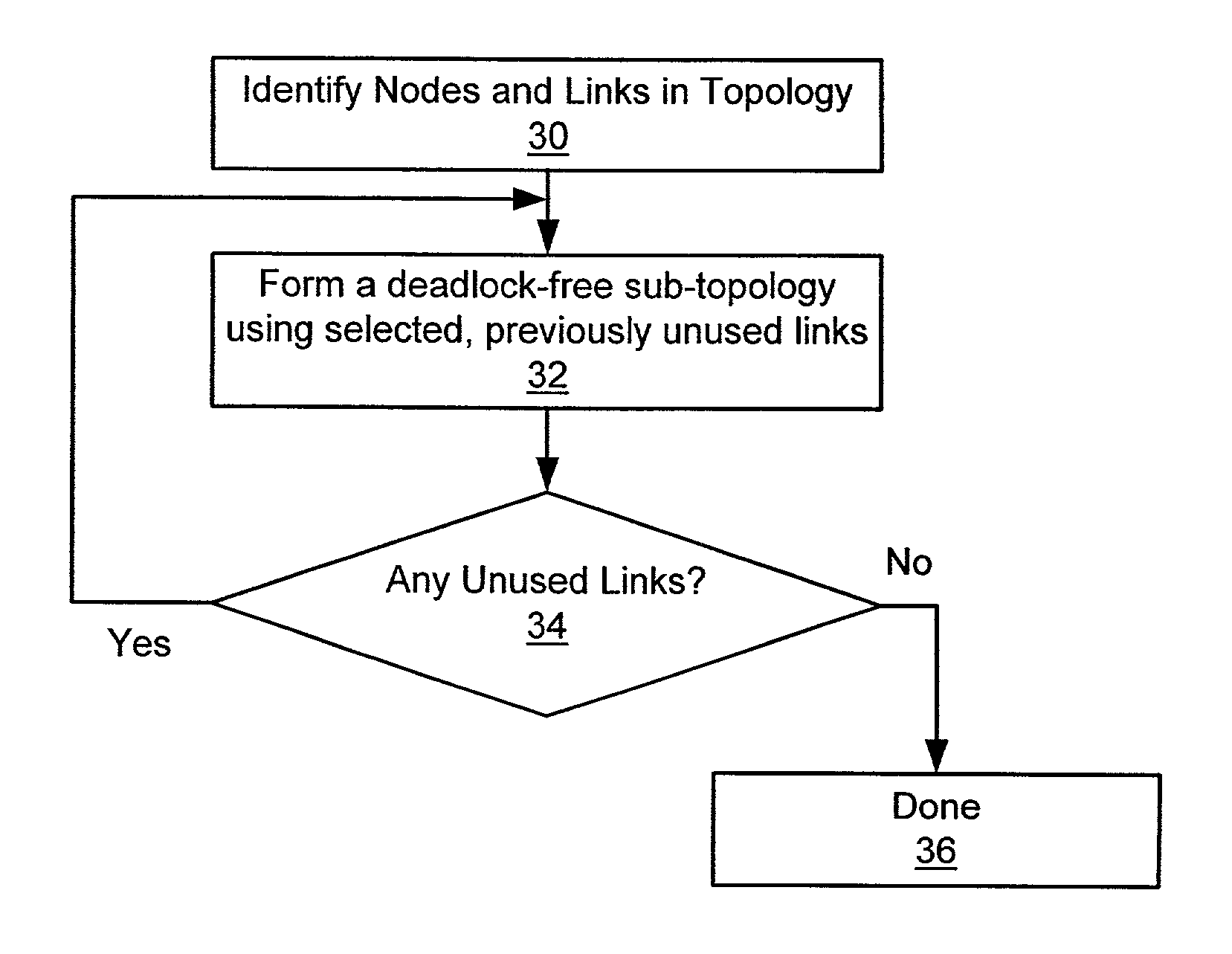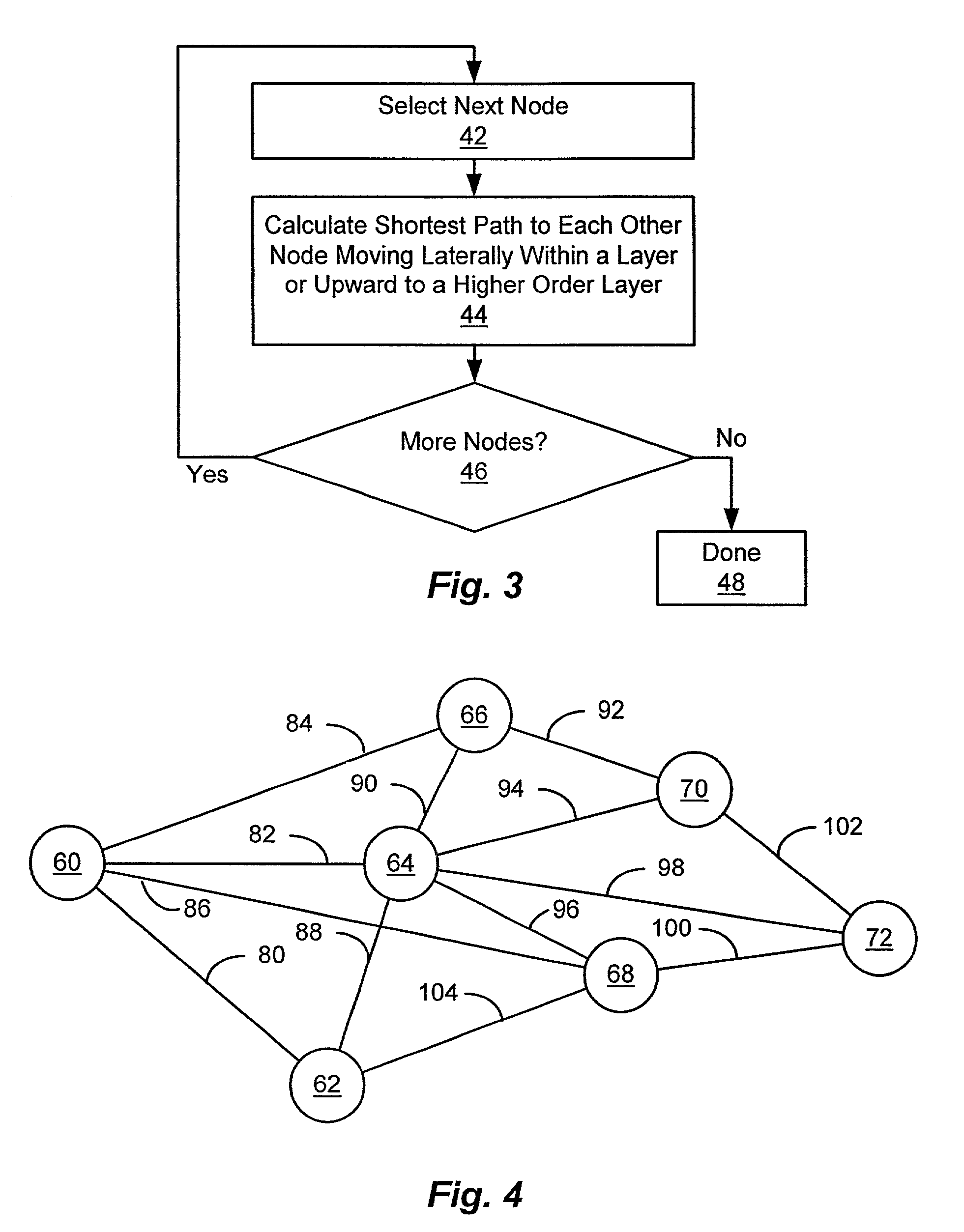System and method for deadlock-free routing on arbitrary network topologies
a topology and deadlock-free technology, applied in the field of data routing through a communications network, can solve problems such as inability to forward received data, congestion of links near the root of the spanning tree, and network deadlock, so as to avoid deadlock and avoid deadlock
- Summary
- Abstract
- Description
- Claims
- Application Information
AI Technical Summary
Benefits of technology
Problems solved by technology
Method used
Image
Examples
Embodiment Construction
[0026]The disclosed system generates an ordered set of deadlock-free sub-topologies of a network in order to find a deadlock-free set of paths through the network. The deadlock-free sub-topologies generated by the disclosed system are referred to herein as “layers”. As shown in FIG. 2, at step 30, the disclosed system first identifies those nodes and links that form the network to be processed. The nodes of the network may, for example, consist of various internetworking devices, such as those devices conventionally referred to as switches. The links of the network may consist of any type of communications link suitable for interconnecting the nodes of the network.
[0027]At step 32 of FIG. 2, the disclosed system forms a layer consisting of a deadlock-free sub-topology of the network being processed. The layer formed at step 32 may be any kind of deadlock-free sub-topology of the network. The links used to form a layer during step 32 are considered to be “used”, and therefore unavail...
PUM
 Login to View More
Login to View More Abstract
Description
Claims
Application Information
 Login to View More
Login to View More - R&D
- Intellectual Property
- Life Sciences
- Materials
- Tech Scout
- Unparalleled Data Quality
- Higher Quality Content
- 60% Fewer Hallucinations
Browse by: Latest US Patents, China's latest patents, Technical Efficacy Thesaurus, Application Domain, Technology Topic, Popular Technical Reports.
© 2025 PatSnap. All rights reserved.Legal|Privacy policy|Modern Slavery Act Transparency Statement|Sitemap|About US| Contact US: help@patsnap.com



